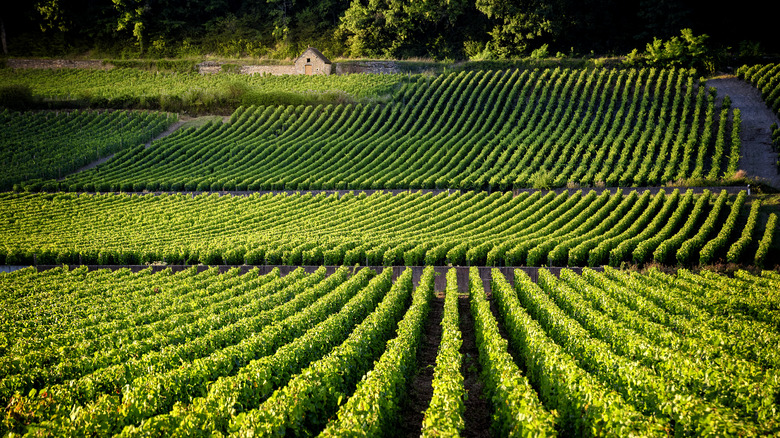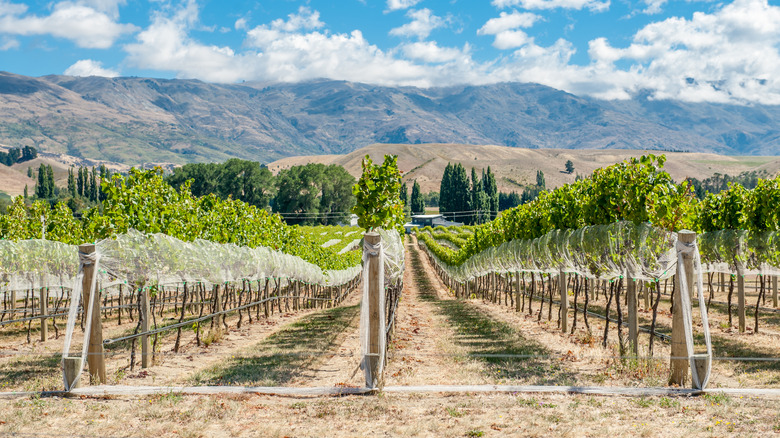What Makes Wine Old World As Opposed To New World?
Knowing the difference between certain wine categories can help make buying decisions a bit easier the next time you find yourself wandering the aisles of booze and browsing wine labels in your local market. Old and New World wines have been used to categorize and distinguish the regions in which specific labels are grown and bottled, and the terms have also been used to designate the ways in which blends are made. While the terms are slowly being taken out of rotation as wine-making develops, acquainting yourself with the meanings and history of these terms can increase your familiarity with the wine brands and lists provided at restaurants.
"What we don't want people to do is shy away from the wine world," one wine shop owner and founder told Food & Wine. "But, as we look around, do we want more people to come to the world of wine? Do we want to be more welcoming? If so, we've got to evolve" those definitions.
The tradition of Old World wines
Generally speaking, Old World wines have come to denote wines from the Western European region where wine-making began. These blends have historically presented lower levels of alcohol, and the grapes from which the wines are made have distinct terroir. Traditional practices of wine-making are often associated with this categorization, yet as the term has evolved, Old World wine can become blurry when it comes to defining precise regions, as many locations where Ancient Romans first planted vineyards and places like Greece and Georgia where wine was made quite early on may not fall into the geographic boundaries of West Europe.
Dr. D. Christopher Taylor, a professor at the University of Houston's Hilton College of Global Hospitality Leadership, warned Food & Wine about the rigidity of such definitions, "It has to be brought up in [the] context of how wine developed over time, but the notion of being able to describe wine style in terms of Old World versus New World is not relevant in today's wine marketplace. Especially for new wine consumers ... it's obsolete as a good descriptor to demarcate one style of wine from another."
Now that vineyards outside of Europe are making wines that focus on regional blends and unique terroir, the previously clear-cut distinction has become muddied, as modern-day wine-making isn't necessarily about specific location but also about how the wine is produced.
Defining New World wines
As an overall classification, wines that are made outside of Western Europe have been regarded as New World blends. These wines are often known for offering fruitier notes and are made with more advanced scientific processes and machinery, like stainless steel vats and temperature-controlled storage buildings.
As winemakers have sought to reach larger markets and keep their various businesses afloat, wine-making practices have been borrowed and adopted — and aren't necessarily restricted to a particular location. Hand-picked grapes gathered in a French vineyard can be processed in a technologically-forward winery, for example, while makers who used to focus on older, traditional methods have adjusted their processes to meet modern consumer demands. As buyers and wine connoisseurs continue to dictate their own drinking preferences with their pocketbooks, wine labels must continue to adjust, and specific geography becomes less of a distinguishing factor than in the earlier days of the wine industry.


